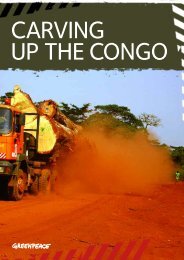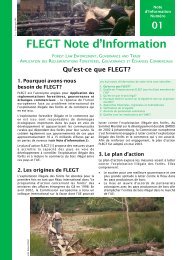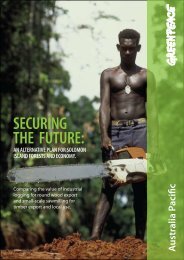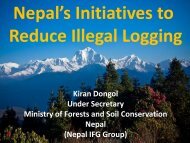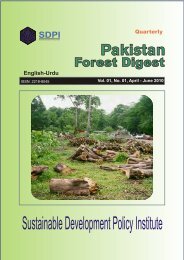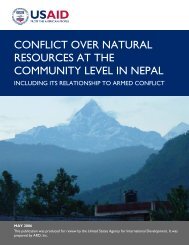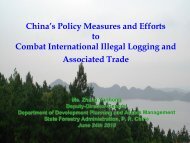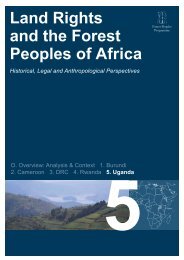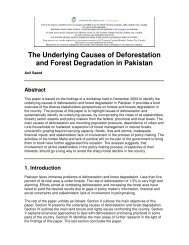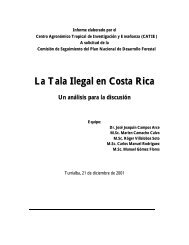CHAINSAW MILLING IN GHANA: CONTExT, DRIVERS ... - Fornis.net
CHAINSAW MILLING IN GHANA: CONTExT, DRIVERS ... - Fornis.net
CHAINSAW MILLING IN GHANA: CONTExT, DRIVERS ... - Fornis.net
- No tags were found...
Create successful ePaper yourself
Turn your PDF publications into a flip-book with our unique Google optimized e-Paper software.
Chainsaw milling in Ghana: context, drivers and impactslegitimacy as organised trade bodies in the industry and wield substantial influencein the sector. They are represented on the Forestry Commission Board and areconsulted on all major forest policy issues. CSM operators are not well organised atthe moment and do not have access to official policy consultation forums.There is evidence that chainsaw milling takes place in the concession areas of somelicensed companies, depriving them of timber stock for their operations (Adam et al.2007a). This creates conflicts and tension and in some cases results in physicalassault. Acheampong and Marfo (2009) reported that chainsaw operators stealtimber, especially in off-reserve areas, from concessions.The Forest Services Division (FSD) is another stakeholder that is greatly affected bychainsaw operations. CSM increases the division’s monitoring costs and complicatesforest management planning since illegal operations distort inventory data. Itis reported that some officers benefit economically from CSM (for details on officialcorruption, see Marfo in Tropenbos International 2004 and Adam et al. 2007b). Themilitary and the police have often been called on to beef up the enforcement capabilityof the FSD. This sometimes takes the form of a task force, a joint policy/FSD/military team that patrols forest areas to arrest chainsaw operators. The judiciary,especially district courts, deal with prosecutions related to chainsaw milling offencesand often participate in discussions about CSM.Both national and international NGOs participate in CSM discussions. They haveadvocated against the status quo to arrest current indiscriminate harvesting practices.Some NGOs have become active in policy discourse, calling for the development ofalternatives rather than sticking to enforcement as the only policy option. Someenvironmental NGOs have argued for full enforcement of the ban.At the operational level, the main CSM participants are involved in the production,transport and marketing of chainsaw products and in the financing for theseoperations. They include operators, operational assistants, loading boys, drivers,wood dealers, resawyers and retailers. The operations mainly involve production (atthe stump site in the forest or bush), loading to main roadsides, haulage to timbermarkets, resawing beams into tradable sizes (mostly at the timber markets) andretailing. Of these enterprises, 79% were classified as sole-proprietorships, 11% aspartnerships involving several individuals, and 10% as having group ownershipinvolving independent operating units (based on data provided in Adam et al.2007a, 35).The people involved in chainsaw operations come from a range of backgrounds.The majority of people in the case study of Adam et al. (2007a) were farmers (48%),unemployed youth (16%), previous timber company workers (7%) and traders (6%),as well as mechanics, masons and labourers. The study reported that about 58% ofthese people got into the business through their own initiative; the rest were trainedthrough apprenticeships. Interestingly, Adam et al. (2007a) also observed that about40% of these enterprises had started operating since the ban was enacted in 1998.12




